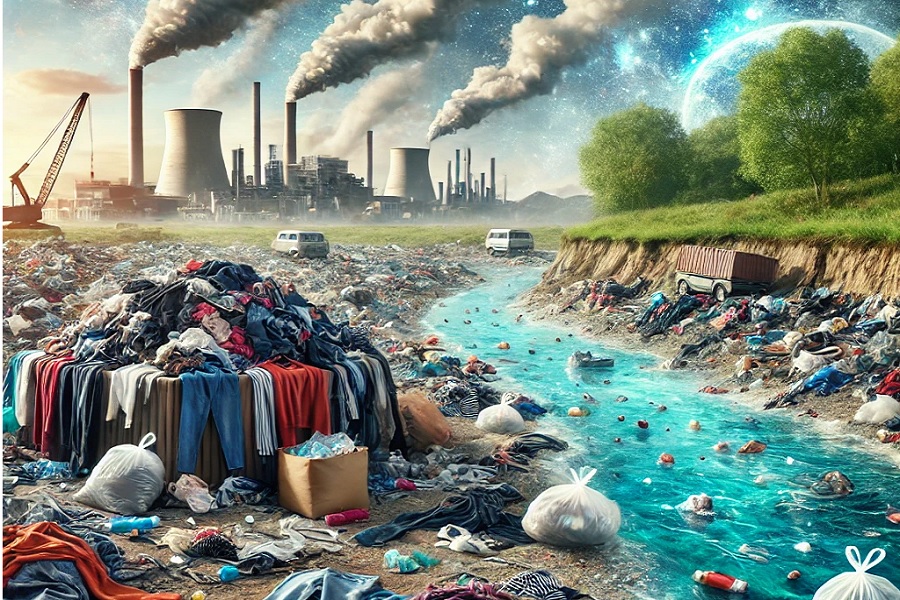``The Environmental Cost of Fast Fashion: Understanding Its Impact and the Path to Sustainable Style``

Fast fashion, a term that refers to the rapid production of cheap, trendy clothing in response to ever-changing consumer demands, has revolutionized the fashion industry. However, behind the alluring prices and stylish designs lies a deep environmental cost. This article explores the significant impact of fast fashion on the environment, delves into the unsustainable practices involved, and highlights the growing movement toward sustainable fashion solutions.
1. The Growth of Fast Fashion and Its Global Reach
Over the past few decades, the rise of fast fashion has been driven by globalization, mass production, and the desire for instant gratification. Major brands release new collections multiple times a year, often with low-cost materials and labor, creating a cycle where consumers purchase cheaply made clothes without much thought for their environmental impact.
2. Overproduction and Waste
The speed at which fast fashion operates leads to overproduction, meaning far more clothing is made than is needed. As a result, a staggering amount of clothing ends up in landfills. According to the Environmental Protection Agency (EPA), textile waste in the U.S. alone exceeds 17 million tons annually. These garments often contain synthetic fibers, which are not biodegradable and remain in landfills for decades.
3. The Carbon Footprint of Fast Fashion
Fast fashion contributes significantly to global carbon emissions. The fashion industry is responsible for approximately 10% of global greenhouse gas emissions, a major factor in climate change. The high energy consumption required for textile manufacturing, dyeing, and shipping worldwide generates immense carbon pollution.
4. The Water Crisis and Pollution
The production of clothing, especially cotton and denim, consumes vast amounts of water. For instance, it takes around 2,700 liters of water to make one cotton t-shirt. Moreover, the dyeing process, which is often done with toxic chemicals, contaminates water sources, impacting local communities and ecosystems. Fast fashion’s demand for cheap materials further exacerbates this problem, as suppliers often operate without adequate waste management practices.
5. Microplastic Pollution
A significant portion of fast fashion is made from synthetic fibers such as polyester, nylon, and acrylic. When washed, these fibers shed tiny microplastics that enter water systems, polluting oceans and harming marine life. These microplastics are incredibly difficult to filter out and can take hundreds of years to degrade.
6. Labor Exploitation and Environmental Impact
While fast fashion’s harmful effects on the environment are well-documented, it is also tied to unethical labor practices. Workers in developing countries are often paid meager wages and work in unsafe conditions to meet the high demands of fast fashion. The environmental degradation caused by these industries is compounded by the social injustices that underlie them.
7. The Shift Toward Sustainable Fashion
As awareness of fast fashion’s environmental impact grows, there is a significant shift toward sustainable fashion. Consumers are increasingly opting for brands that prioritize eco-friendly materials, fair labor practices, and low-waste production processes. Recycled fabrics, organic cotton, and the use of natural dyes are becoming more mainstream, as are rental and second-hand clothing services that promote reusing garments rather than buying new ones.
8. The Role of Brands and Consumers
Both brands and consumers play crucial roles in combating the detrimental effects of fast fashion. Brands are encouraged to adopt more sustainable practices, such as offering long-lasting, high-quality products, reducing waste, and investing in ethical production methods. On the other hand, consumers are urged to make more thoughtful purchasing decisions—choosing quality over quantity, supporting sustainable brands, and embracing slow fashion, which encourages buying less and investing in timeless pieces.
Conclusion
The environmental cost of fast fashion is undeniable, and the industry’s current trajectory is unsustainable. However, with greater awareness, innovation, and a collective effort from both consumers and brands, it is possible to pave the way for a more sustainable and eco-conscious fashion future. By embracing sustainable practices and mindful consumption, we can mitigate the harmful impact of fast fashion and work toward a cleaner, greener planet.
























